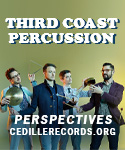There is one truly interesting work on this disc from a collector’s standpoint: Victor de Sabata’s suite from the ballet Mille e una notte (A Thousand and One Nights). Now as we all know, de Sabata was a conductor of tremendous gifts, and a composer of absolutely no personality whatsoever. His disc of orchestral works on Hyperion sounds like absolutely anyone; the style is completely generic. So it is with this ballet, but the generic style he adopts here is exactly what the album title promises: the sound of the ’30s. The music has a sort of Hollywood gloss that’s quite fetching, and if it sounds as if were written by a decade rather than by a person, it’s nonetheless humorous, brilliantly scored, and fun. You can sample the opening gesture below; it’s kind of like Respighi meets Gershwin. It’s also played fabulously by Chailly and the Gewandhaus, who clearly relish the many opportunities that the music offers for mindless displays of empty virtuosity.
And speaking of mindless, we come to the rest of the program. This is the part that is supposed to “sell” the disc. We don’t exactly need another recording of Ravel’s G major Concerto, but aside from an excessively slow “meno vivo” entrance of the solo in the first movement, this is a good performance that gets better as it goes. The slow movement is touching and flows with effective, un-exaggerated rubato, while the finale, where Stefano Bollani takes pains to vary the articulation of the opening toccata, has a character far removed from the usual machine-gun approach. The two Kurt Weill song arrangements, though, bring nothing to the party, and having two performances of Stravinsky’s Tango, one for piano, one arranged for orchestra, strikes me as utterly pointless. There is so much more music that would have been more enjoyable and interesting, even more “conceptual” than this.
All of this noodling between Bollani and Chailly only winds up making de Sabata’s piece sound very much an outsider, when in fact it’s the one work that really justifies the album concept in the first place. In other words, the disc has a split personality, even though the performances are mostly very good to excellent. Collectors wanting the de Sabata won’t care about the rest of it. Will anyone who wants the Ravel take a risk on a few solo items, the same tango twice, plus 27 minutes of unknown orchestral music by a conductor whose name is known today (if at all) as the guy accompanying the Callas Tosca? Your guess is as good as mine.
































